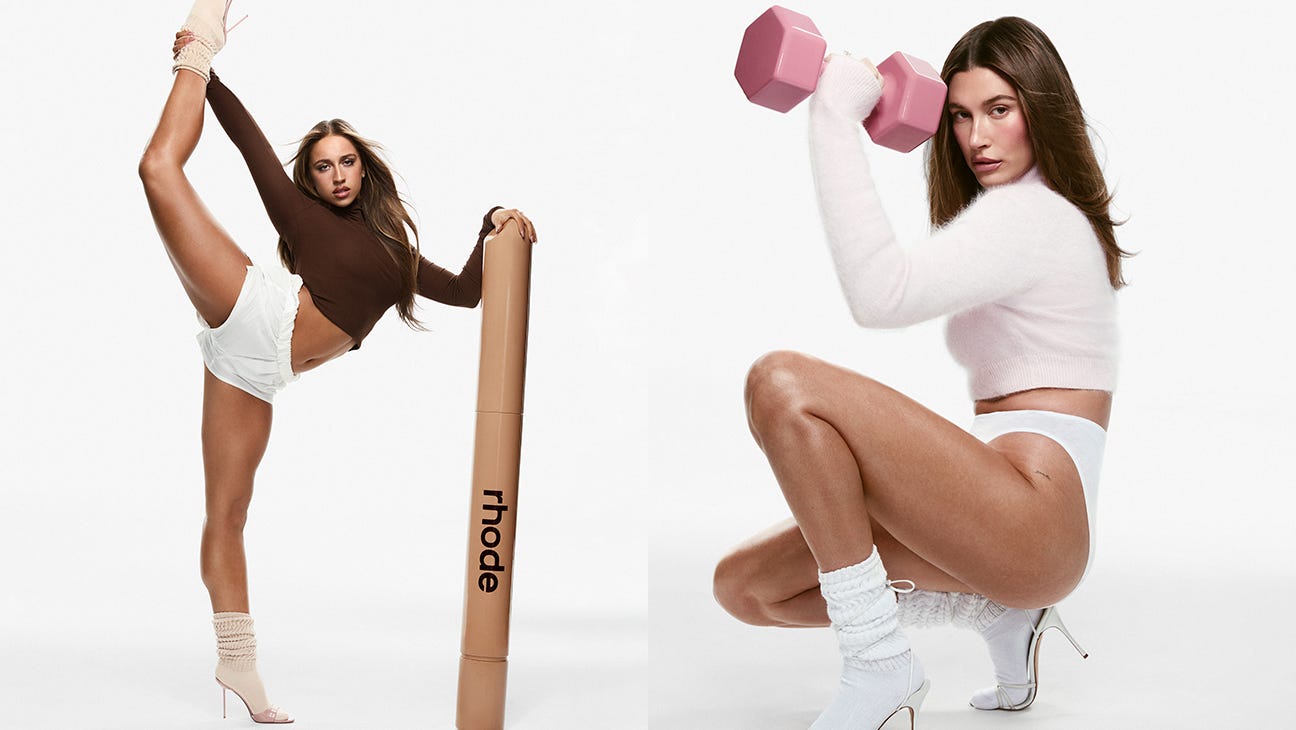How Rhode Manipulates Social Media Better Than Any Other Beauty Brand
The illusion of organic hype.
In the world of beauty, a product isn’t just a product anymore—it’s a cultural moment, a digital phenomenon, an object of desire before it even exists. Few brands understand this better than Rhode, Hailey Bieber’s skincare empire, which has become a case study in how to manufacture demand disguised as effortless, organic hype.
This week, Rhode’s Peptide Lip Shape hasn’t even hit the shelves yet, and yet, it’s already a must-have—a status symbol in the making. TikTok is flooded with speculation, Instagram feeds are inundated with teaser posts, and beauty communities are already ranking it alongside Dior’s Lip Oil or Charlotte Tilbury’s Pinkgasm—products that sold out before they were even widely available.
But is this demand real? Or has Rhode perfected the art of engineered virality—a formula so effective that the illusion of hype is indistinguishable from the real thing?
The Beauty of a ‘Casual’ Tease
In traditional beauty marketing, brands would rely on editorial features, celebrity endorsements, and retail partnerships to slowly build anticipation before launch. Rhode does none of this. Instead, it lets the internet do the work for them—or at least, that’s what it wants you to believe.
For months, Hailey Bieber has been subtly wearing and mentioning the product on social media—without explicitly announcing it. No campaign, no dramatic unveil—just a “casual” shot of her perfectly lined lips in a blurry mirror selfie.
This strategy isn’t accidental; it’s a masterclass in digital-era product seeding. 84% of Gen Z consumers say they trust influencers more than brands themselves. When a product appears in a natural, unforced way—even if that moment is entirely orchestrated—it feels more trustworthy. It’s why fans started asking in the comments: “Wait, what lip liner is Hailey wearing?” long before Rhode officially acknowledged its existence.
And as any marketing (and PR) executive will tell you: the best advertisement isn’t an ad—it’s the audience asking for more before you even offer it.
FOMO as a Business Model
By the time Rhode officially announced Peptide Lip Shape, the demand was already there. The pre-launch strategy wasn’t about selling the product—it was about making it feel like it was already a staple.
• In just three days, the Peptide Lip Treatment racked up a 440,000-person waitlist.
• Rhode’s last drop saw 100,000 units sold in 24 hours—a sell-out rate that mirrors traditional luxury fashion brands rather than beauty startups.
• The brand’s website has a dedicated “Rhode Waitlist” page—a permanent digital queue, reinforcing the idea that Rhode products are perpetually unattainable.
This is not just marketing; it’s psychological priming. When a product is framed as exclusive, fleeting, and hard to access, the perceived value skyrockets. It’s no longer just a lip liner—it’s social currency. Owning it means you were fast enough, connected enough, aware enough.
And in a digital landscape where beauty is now a status game, Rhode plays to win.
The Case for Preemptive Nostalgia
The most powerful beauty brands today don’t just sell products—they sell cultural nostalgia before it even exists. Rhode’s lip liner isn’t just a functional tool; it’s already a moment in beauty history before anyone has tried it.
This is what we call preemptive nostalgia: the process of making something feel like an instant classic, even if it’s brand new. It’s why Dior’s Lip Oil feels like a cult beauty staple, despite only launching in 2022. It’s why Glossier’s Balm Dotcom became synonymous with ‘cool-girl minimalism’ before most people even bought one.
And Rhode? It’s selling an aesthetic more than an item. The lip liner comes wrapped in the visual language of the ‘clean girl’ beauty movement, which Rhode itself has defined: glossy, hydrated, effortless—but engineered to perfection. The fact that it hasn’t even launched yet? That’s just part of the narrative.
The Data That Proves the Hype
While other brands pay for visibility, Rhode’s model ensures that consumers drive the hype cycle themselves.
• TikTok’s #RhodeSkin has over 1.3 billion views, making it one of the most-watched beauty brands on the platform.
• Rhode’s engagement rate on Instagram outperforms legacy beauty houses by 3x, even though it has a fraction of their following.
• Beauty industry reports indicate that products that create pre-launch loop anticipation experience 78% faster sell-out rates post-launch—a statistic that Rhode has weaponized.
And here’s the kicker: Rhode spends almost nothing on traditional advertising. Its marketing budget is its audience.
The Future of Beauty Hype: Where Does This Leave Legacy Brands?
Rhode’s entire strategy disrupts traditional beauty marketing, leaving legacy brands in a precarious position.
Historically, brands like Chanel and MAC relied on gradual prestige-building, retail exclusivity, and traditional editorial coverage. But in the age of self-sustaining digital hype cycles, this strategy is becoming obsolete.
• Does a beauty brand even need legacy anymore when it can create instant cultural capital?
• If engineered virality works so well, is there still room for organic, slow-burn brand growth?
• And most critically—do consumers even care if hype is real, or do they just want to be part of it?
These are the questions brands must answer. And if Rhode’s trajectory proves anything, it’s that the new luxury in beauty isn’t heritage—it’s being the most talked-about brand at any given moment.
If Hype Can Be Engineered, Is Anything Truly ‘Cult’ Anymore?
Rhode’s Peptide Lip Shape isn’t even out yet, and yet, it’s already a classic. Not because of years of innovation, nor because of a revolutionary formula. But because it has mastered the illusion of inevitability.
The best beauty brands today don’t just sell you a product.
They sell you the privilege of believing you discovered it before the rest of the world.
And that? That’s the real power of modern beauty marketing.







